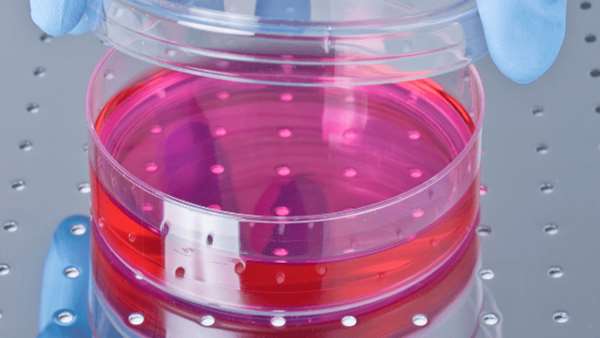Mesenchymal stem cell fate controlled by varying culture stiffness
Researchers from Tokyo Metropolitan University (Japan) have quantitatively characterized the heterogeneity in the responsiveness of mesenchymal stem cells (MSCs) to the elastic modulus of culture substrates.
Researchers from Tokyo Metropolitan University (Japan) have quantitatively characterized the heterogeneity in the responsiveness of mesenchymal stem cells (MSCs) to the elastic modulus of culture substrates. The localization dynamics of YAP and RUNX2 proteins in cell nuclei and how this changed with stiffness, provides a basis to design the substrate elastic modulus to control the state of stem cells.
The differentiation of MSCs can be controlled by placing them on surfaces with a different mechanical stiffness, or elastic modulus. Despite the phenomenon being robust and reproducible, MSCs are very sensitive to the exact environment into which they are placed, even which batch they came from. Reliable control over MSC states would be invaluable to research and potential biomedical applications.
Associate Professor Hiromi Miyoshi (Tokyo Metropolitan University) and their team analyzed the elastic modulus-dependent dynamics of a mechanotransducer, YAP, and an osteogenic differentiation factor, RUNX2, in three different MSC batches.
The team used a styrenated gelatin gel with controllable elastic modulus, which had significantly better reproducibility than popular collagen alternatives.
The percentage of cells with YAP localized in the nucleus increased linearly with increases in the elastic modulus, plateauing at 10 kPa for all batches analyzed. The increase in the percentage with the substrate elastic modulus was described by the same linear function.
Similarly, the percentage of cells with RUNX2 nuclear localization also increased linearly with substrate elastic modulus, plateauing at 5 kPa, although the regression lines to the linearly increasing regions varied between lots.
With this kind of information, anyone could make a gel of a specific stiffness and actively control the level of YAP/RUNX2 in the nucleus of MSCs. By doing so, one could tune when and how the cells differentiate.
The team hope this new level of control over cell fate will help accelerate research into MSCs and lead to exciting therapeutic applications.
https://www.regmednet.com/mesenchymal-stem-cell-fate-controlled-by-varying-culture-stiffness/




ارسال به دوستان